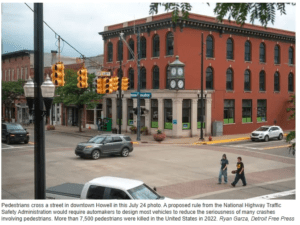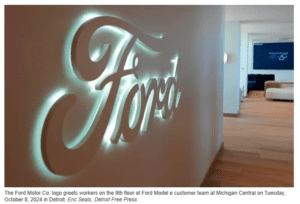Kia power door pinch recall — what should be done?
Sometimes how to handle a safety issue is not so clear. The Kia power sliding door recall is an interesting example of the types of issues that can come up that are not clear-cut.
– Nine confirmed injuries due to minivan power door sliding closed on people, ranging from bruising to a fractured thumb to a broken arm.
– Investigation reveals that system works exactly as designed, noting auto-reverse to prevent injury is a “supplemental” rather than mission-critical safety feature (i.e., best effort is permissible, and their idea of best effort includes a broken arm)
– Investigation results claim all the competitor sliding doors are just as dangerous mechanically (comparable closing force/reversal properties)
– The remedy slows down the final inches of closing and sounds a couple warning beeps when moving the door. That does not sound like a particularly robust fix. It sounds like “we need to do something, how about this…” (And why weren’t these in place before?)
– Efforts throughout focus on “customer awareness,” mailing customers reminders of functions, etc. Classical playbook of blame the user and “educate” them even harder despite evidence that education isn’t working.
I have diverse reactions to this:
– Why did it take a NHTSA recall to get Kia to slow door and add beeps after the broken arm incident? Why didn’t they make these changes earlier?
– I note the Kia did not say they compared its human interface to others — just the closing mechanics. I remember a different brand minivan I owned having beeps for the door and slowing down on closing 20+ years ago, so not rocket science here.
– Hard to believe that beeps will keep kids from reaching in to grab something as the door closes (one of the incidents reported)
– A broken arm is no fun, but it’s only a broken arm and only one of them. (My career in the elevator industry started with getting my hand stuck in an elevator door when I was probably 4 years old because I was curious to see how it worked; I remember that incident pretty well…)
– If there is a safety issue across this vehicle class as Kia implies in their report, it is obvious the companies think everything is fine so nothing will change. Should it change? Is there a way to get it to change without NHTSA having to beat up the whole industry (which will likely take more bad things to happen before they have a mandate to do that)? Or is this just that Kia got the human factors wrong and there is no standard/common practice for this.
– Perhaps an industry standard could address this before NHTSA is eventually forced to act. Of course the companies would actually have to follow the industry safety standard, for which they have a poor track record in automotive.
This suggests that the car companies don’t have a lot of incentive, resources, inclination, or something to think about the lesser severity safety issues. It is really easy to blame these injuries on children not behaving in a mature way. But it’s a minivan — having kids around a power door is pretty much the whole reason these vehicles exist. It feels like this, and many other less critical safety issues, could be handled better. But that will take a big cultural pivot away from the blame-the-driver situation we have today.
IMHO weak safety culture operating under air cover of cost savings (even when that isn’t really a valid excuse) is the big overarching issue. Power door pinches are just another symptom.
Interested in everyone’s thoughts on this one…
NHTSA recall 23V236 timeline narrative: https://static.nhtsa.gov/odi/rcl/2023/RMISC-23V236-8289.pdf
Article summary: https://www.autoevolution.com/news/kia-recalls-new-carnival-over-software-issue-automaker-aware-of-nine-confirmed-injuries-213320.html






